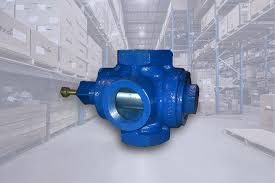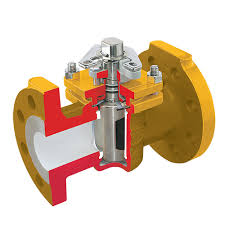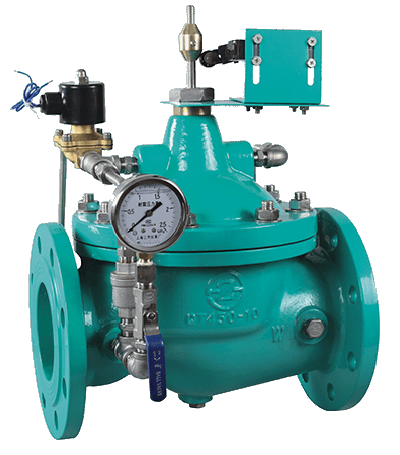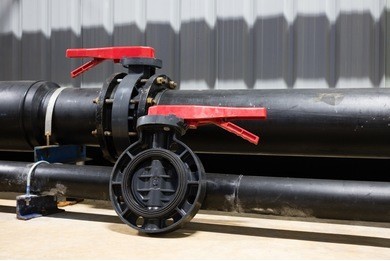Non-lubricated Plug Valve

The Application of Non-lubricated Plug Valve
Introducing Cameron’s innovative solution, the Non-lubricated Plug Valve, also known as the DeZURIK plug valve. This valve offers superior performance in various applications due to its unique design, eliminating the need for lubrication. Compared to ball valves, plug valves boast a tighter seal and are less prone to leakage, making them ideal for critical environments. In industries where oil is present, the oil plug valve variant ensures reliable operation even in harsh conditions. Trust Cameron’s expertise for efficient fluid control solutions with the Non-lubricated Plug Valve.
What Are The Types Of Non-lubricated Plug Valve?
- Tapered Plug Valve: Features a tapered plug that fits snugly into the valve body, providing a tight seal to control flow. Suitable for applications requiring precise flow control and minimal leakage.
- Sleeved Plug Valve: Utilizes a sleeve or lining inside the valve body to provide a tight seal around the plug. Ideal for abrasive or corrosive fluids and environments where leakage prevention is critical.
- Lubricated Plug Valve: Although not strictly non-lubricated, this type incorporates a self-lubricating mechanism to reduce friction and ensure smooth operation. Suitable for applications where occasional lubrication is acceptable.
- Eccentric Plug Valve: Features an eccentrically mounted plug that rotates off-center to open and close the valve. Provides enhanced sealing performance and resistance to wear, making it suitable for high-pressure and high-temperature applications.
- Three-Way Plug Valve: Designed with three ports to allow for diversion or mixing of flow. Offers versatility in fluid distribution and control, making it suitable for complex piping systems and process applications.
What Is Non-lubricated Plug Valve?
A Non-lubricated Plug Valve is a type of valve designed to control the flow of fluids in pipelines without the need for external lubrication. It features a tapered or cylindrical plug that rotates within the valve body to open, close, or regulate the flow of fluid. Unlike traditional plug valves that require lubrication to reduce friction and prevent seizing, non-lubricated plug valves utilize innovative materials and design features to ensure smooth operation and minimal maintenance, making them ideal for applications where contamination from lubricants must be avoided or where frequent lubrication is impractical.
How to Select the Right Non-lubricated Plug Valve?
Selecting the right Non-lubricated Plug Valve involves considering factors such as the fluid type, pressure and temperature conditions, valve size, and operating environment. Assess the specific requirements of your application, including compatibility with materials, flow rates, and system parameters. Consult with valve manufacturers or engineers to ensure the chosen valve meets industry standards and specifications, providing reliable performance and longevity in your particular operating conditions.
Features of Non-lubricated Plug Valve
- Self-lubricating Design: Utilizes innovative materials and design to eliminate the need for external lubrication, reducing maintenance requirements and minimizing the risk of contamination.
- Tight Sealing: Offers a tight seal to prevent leakage and ensure reliable operation in various pressure and temperature conditions, enhancing system safety and efficiency.
- Corrosion Resistance: Constructed from corrosion-resistant materials such as stainless steel or coated alloys, ensuring longevity and durability in corrosive environments.
- Low Friction: Incorporates low-friction bearings or coatings on plug surfaces to reduce friction during operation, resulting in smooth and consistent valve actuation.
- Wide Range of Applications: Suitable for a wide range of applications, including petrochemical, chemical processing, water treatment, and power generation, due to their versatility and robust construction.
- Minimal Maintenance: Requires minimal maintenance due to the absence of lubrication requirements, saving time and resources over the valve’s lifespan.
- Bubble-tight Shut-off: Provides bubble-tight shut-off to effectively isolate fluid flow and prevent leakage, ensuring system integrity and safety.
- Bi-directional Flow: Allows for bi-directional flow capability, providing flexibility in system design and installation.
Advantages and Disadvantages of Non-lubricated Plug Valve
Advantages:
- Minimal Maintenance: Requires less maintenance compared to lubricated plug valves, reducing downtime and operational costs.
- Eliminates Contamination: The absence of external lubrication eliminates the risk of contamination of the process fluid, ensuring product purity in sensitive applications.
- Enhanced Reliability: Self-lubricating design reduces the risk of valve seizing or sticking, ensuring reliable operation over extended periods.
- Versatility: Suitable for a wide range of applications and industries due to their robust construction and ability to handle various fluids and operating conditions.
- Tight Seal: Provides a tight seal to prevent leakage, enhancing system safety and efficiency.
Disadvantages:
- Higher Initial Cost: Non-lubricated plug valves may have a higher initial cost compared to conventional lubricated plug valves due to their specialized design and materials.
- Limited Temperature Range: Some non-lubricated plug valves may have limitations in temperature range compared to lubricated valves, restricting their suitability for high-temperature applications.
- Complex Design: The design of non-lubricated plug valves can be more complex than traditional lubricated valves, requiring specialized manufacturing processes and expertise.
- Potential Wear: Over time, the self-lubricating materials in non-lubricated plug valves may wear, requiring replacement or refurbishment to maintain optimal performance.
- Sensitive to Contaminants: While non-lubricated plug valves eliminate the risk of external lubricant contamination, they may be more sensitive to particulate contaminants in the process fluid, requiring proper filtration and maintenance.

The Specifications of Non-lubricated Plug Valve
| Specification | Details |
|---|---|
| Type | Non-lubricated Plug Valve |
| Ball Material | Stainless Steel or Alloy |
| Attachment Type | Flanged, Threaded, Welded, etc. |
| Thread Standard | ANSI, DIN, BS, JIS, etc. |
| Thread Size | 1/2 inch – 24 inches (or as per requirement) |
| Body Material | Carbon Steel, Stainless Steel, Alloy Steel, etc. |
| Safe for Use With | Water, Oil, Gas, Chemicals, etc. |
| Handle Type | Manual, Gear-operated, Electric Actuator, etc. |
| Handle Material | Stainless Steel, Carbon Steel, etc. |
| Maximum Working Pressure (psi) | Up to 6000 psi (or as per requirement) |
| Maximum Working Pressure (bar) | Up to 414 bar (or as per requirement) |
| Operating Pressure | As per application requirements |
The Installation Steps for Non-lubricated Plug Valve
- Preparation:
- Gather all necessary tools and equipment, including wrenches, bolts, and gaskets.
- Ensure the work area is clean and free from debris.
- Shut Off Utilities:
- Turn off the main power supply or isolate the pipeline to prevent accidental activation or flow of fluids.
- Positioning:
- Identify the optimal location for valve installation based on system requirements and accessibility.
- Ensure sufficient space around the valve for maintenance and operation.
- Attachment:
- Securely attach the valve to the mounting surface using appropriate bolts and fasteners.
- Ensure proper alignment and orientation of the valve with the flow direction.
- Connection:
- Connect the inlet and outlet pipes to the corresponding ports on the valve using appropriate fittings.
- Tighten the connections securely to prevent leaks, following manufacturer’s torque specifications.
- Sealing:
- Apply a suitable sealing material, such as thread sealant or gaskets, to ensure a tight seal between the valve and pipes.
- Check for any gaps or irregularities in the sealing surface and address them accordingly.
- Testing:
- Open the main water supply valves or restore the flow of fluids to pressurize the system.
- Conduct a leak test to ensure there are no leaks in the valve or connections.
- Operate the valve manually or electrically to verify proper functioning and smooth operation.
- Adjustment:
- Fine-tune the valve settings as necessary to achieve the desired operating pressure and flow rate.
- Ensure that the valve is calibrated to respond appropriately to system requirements.
- Labeling:
- Clearly label the valve and its controls to ensure easy identification in emergency situations.
- Provide operating instructions and emergency shutdown procedures for personnel.
- Final Inspection:
- Inspect the installation for any signs of leaks, loose connections, or improper alignment.
- Confirm that the valve is installed correctly and ready for operation.
The Operation Theory of Non-lubricated Plug Valve
- Valve Plugs: The core component of a plug valve is the plug, which is typically cylindrical or tapered in shape. This plug fits into the valve body and is rotated to control the flow of fluids through the valve.
- Eccentric Plug Valve: This type of plug valve features a plug that is mounted off-center, or eccentrically, within the valve body. When the plug rotates, it moves away from the seat gradually, reducing wear and friction and ensuring a longer service life.
- Operation Theory:
- In operation, when the valve is open, the plug is rotated to allow fluid to flow through the valve body.
- When the valve is closed, the plug is rotated to block the flow of fluid, creating a tight seal against the valve seat to prevent leakage.
- Sealing Mechanism: The sealing mechanism of a non-lubricated plug valve relies on the interference fit between the plug and the valve seat. This tight fit ensures a bubble-tight seal, even in high-pressure applications.
- Materials and Coatings: Non-lubricated plug valves are often constructed from materials such as stainless steel or special alloys to withstand corrosive environments. Additionally, they may feature coatings or surface treatments to reduce friction and wear, enhancing longevity and reliability.
- Applications: Non-lubricated plug valves are widely used in industries such as oil and gas, chemical processing, water treatment, and power generation. They are suitable for applications where tight shut-off and reliable performance are essential, even in demanding operating conditions.

